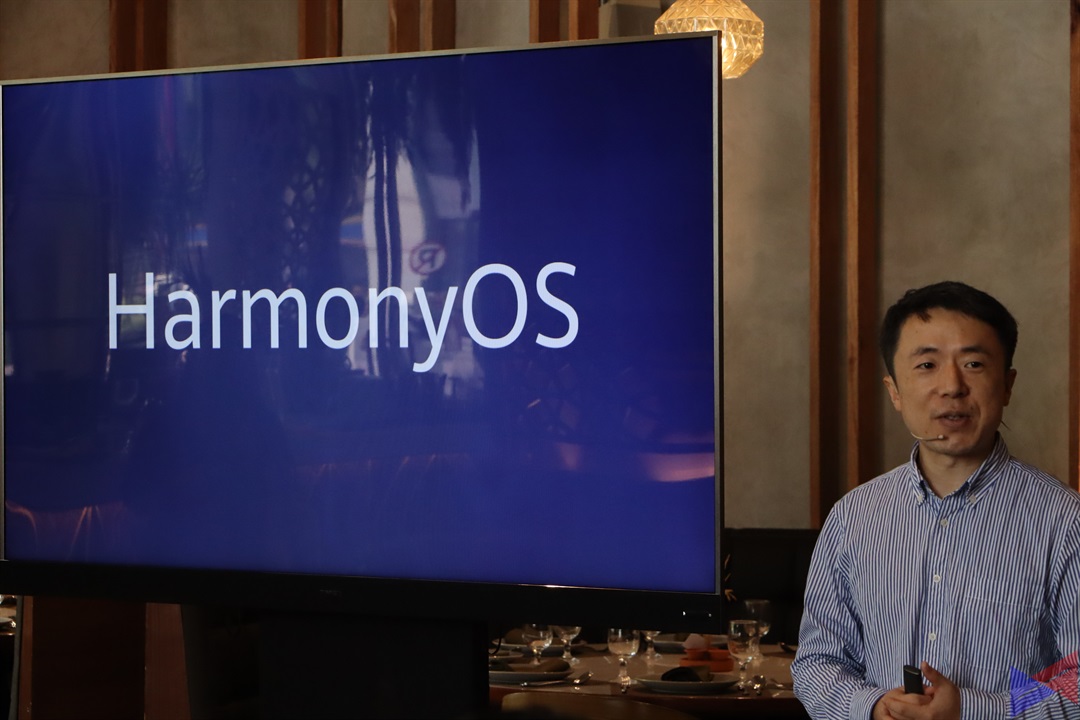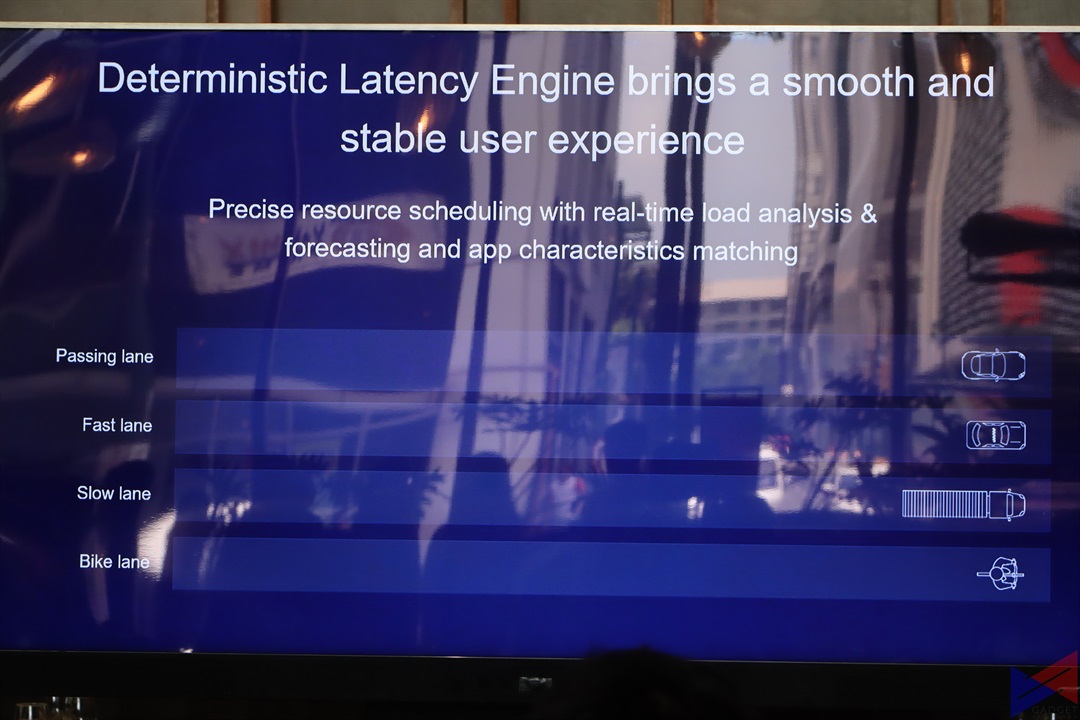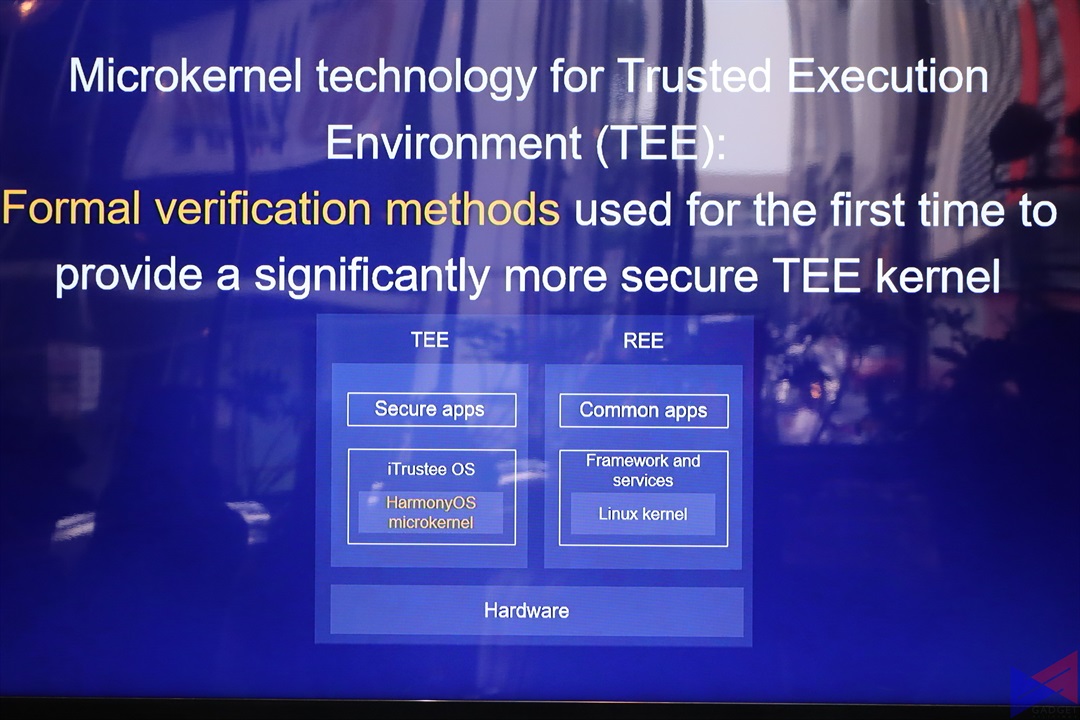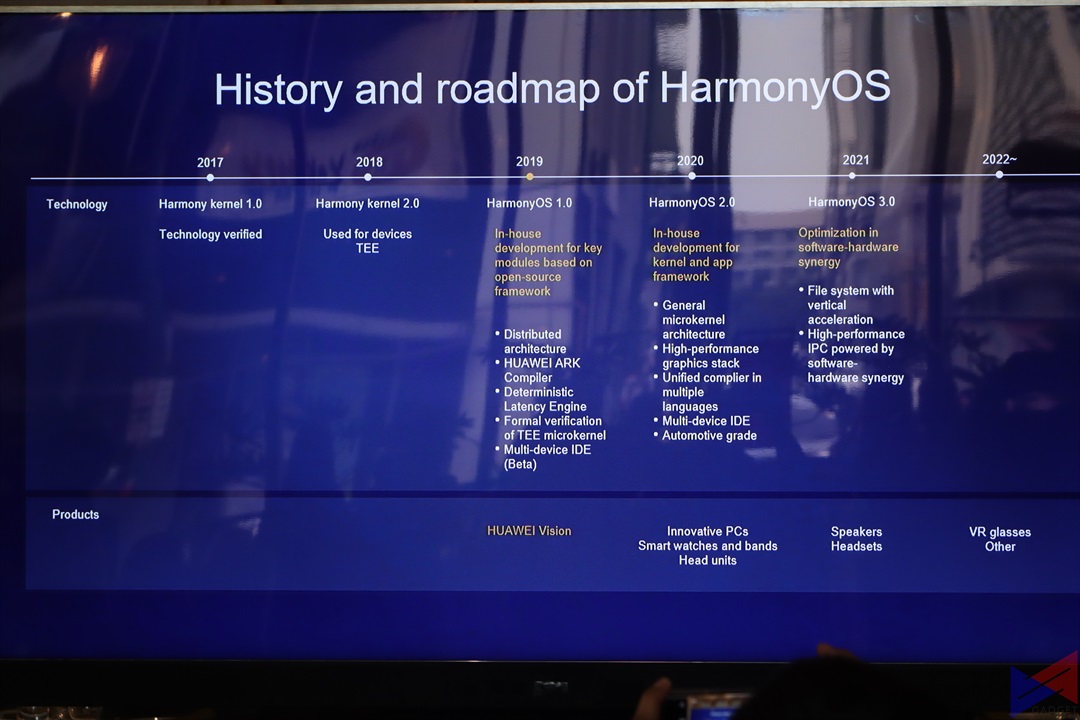Ever since the announcement of Harmony OS, a lot of speculations and questions have risen as to what role it will play in the Huawei’s roadmap. As part of its campaign to introduce this technological breakthrough, the company has invited Product Marketing Senior Manager, James Lu to explain what the new OS is all about, and how it gives users better and numerous possibilities.
 “Harmony OS is different from Android nor iOS. The functions of HarmonyOS are way beyond all of the current use of those available operating systems”, says Lu.
“Harmony OS is different from Android nor iOS. The functions of HarmonyOS are way beyond all of the current use of those available operating systems”, says Lu.
According to him, HarmonyOS is a distributed microkernel-based OS, and is mainly aimed at smart devices such as wearables, Huawei Vision, and car head units. It also aims to deliver a fully-connected, all-scenario intelligent experience across multiple devices.
Why Release HarmonyOS Now?
Of course, this was one of the questions a lot of people had in mind. Huawei says that it was actually in the pipeline even before all of the US trade ban related events happened.
As for the timing, well, it’s related with the rapid development of technologies such as 5G and AI. Another is that Intelligent Life Strategy will be the company’s focus in the next 5 to 10 years, and lastly, there is no OS currently available that can cater to all the requirements of the 5G era.
What Advantages Does HarmonyOS Bring?
Seamless
 HarmonyOS is the first-ever device OS that uses distributed architecture. By adopting such, virtual bus technology, it offers a shared communications platform, distributed data management and task scheduling, and virtual peripherals.
HarmonyOS is the first-ever device OS that uses distributed architecture. By adopting such, virtual bus technology, it offers a shared communications platform, distributed data management and task scheduling, and virtual peripherals.
Developing apps will be easier than ever before, and those that are built on HarmonyOS should run on different devices while delivering a seamless, and collaborative in any scenario.
Smooth
 To address any underperformance challenges, HarmonyOS will utilize a Deterministic Latency Engine and High Performance Inter Process Communication (IPC). The former determines task execution priorities along with time limits for scheduling in advance. Resources will be allocated for tasks with higher priorities, which in turn reduces the response latency of apps by up to 25.7%. On the other hand, IPC performance will be up to five times more efficient compared to existing systems, thanks to the microkernel.
To address any underperformance challenges, HarmonyOS will utilize a Deterministic Latency Engine and High Performance Inter Process Communication (IPC). The former determines task execution priorities along with time limits for scheduling in advance. Resources will be allocated for tasks with higher priorities, which in turn reduces the response latency of apps by up to 25.7%. On the other hand, IPC performance will be up to five times more efficient compared to existing systems, thanks to the microkernel.
Secure
 HarmonyOS uses a microkernel design that offer enhanced security and low latency. The microkernel is also designed so that as most of the system services are implemented outside the kernel, and that it in itself only provides basic services.
HarmonyOS uses a microkernel design that offer enhanced security and low latency. The microkernel is also designed so that as most of the system services are implemented outside the kernel, and that it in itself only provides basic services.
The design also uses formal verification methods – an effective mathematical approach to validate system correctness from the source while more traditional verification methods are only used for specific scenarios. HarmonyOS is the first OS to use formal verification in device TEE. Because the microkernel uses less code, the probability of an attach is greatly reduced.
Unified
 Powered by a multi-language IDE, multi-language unified compilation, and a distributed architecture kit, Harmony OS is able to automatically adapt to different screen layout controls and interactions, and supports both drag-and-drop control and preview-oriented visual programming. As such, developers will be able to efficiently build apps that will run on multiple devices. Thanks to a multi-device IDE, developers will only need to code their apps once, and be able to deploy across multiple devices, creating an integrated ecosystem.
Powered by a multi-language IDE, multi-language unified compilation, and a distributed architecture kit, Harmony OS is able to automatically adapt to different screen layout controls and interactions, and supports both drag-and-drop control and preview-oriented visual programming. As such, developers will be able to efficiently build apps that will run on multiple devices. Thanks to a multi-device IDE, developers will only need to code their apps once, and be able to deploy across multiple devices, creating an integrated ecosystem.
Huawei ARK Compiler is the first static compiler that can perform up to par with Android’s virtual machine. Developers can compile a broad range of advanced languages into machine code, all within a single unified environment. It supports unified compilation in multiple languages, which in turn allows developers to greatly improve productivity.
“We’re entering a day and age where people expect a holistic intelligent experience across all devices and scenarios. To support this, we felt it was important to have an operating system with improved cross-platform capabilities. We needed an OS that supports all scenarios, that can be used across a broad range of devices and platforms, and that can meet consumer demand for low latency and strong security.”
– Richard Yu, CEO of Huawei’s Consumer Business Group
Roadmap
 As to whether HarmonyOS will make it to Huawei smartphones, the answer is that they will continue to keep using Android for as long as it’s available, but the latter will always be ready.
As to whether HarmonyOS will make it to Huawei smartphones, the answer is that they will continue to keep using Android for as long as it’s available, but the latter will always be ready.
Emman has been writing technical and feature articles since 2010. Prior to this, he became one of the instructors at Asia Pacific College in 2008, and eventually landed a job as Business Analyst and Technical Writer at Integrated Open Source Solutions for almost 3 years.






